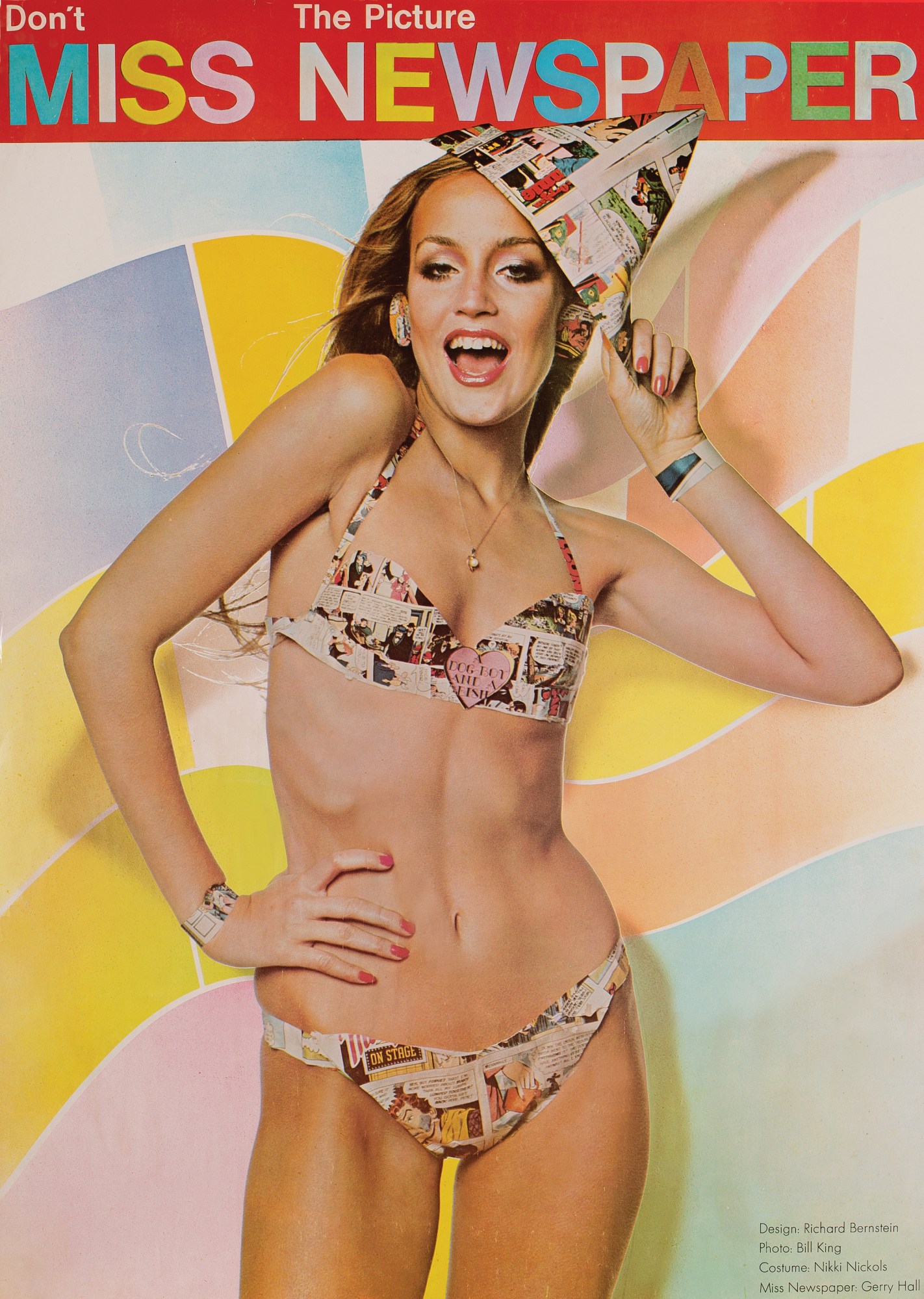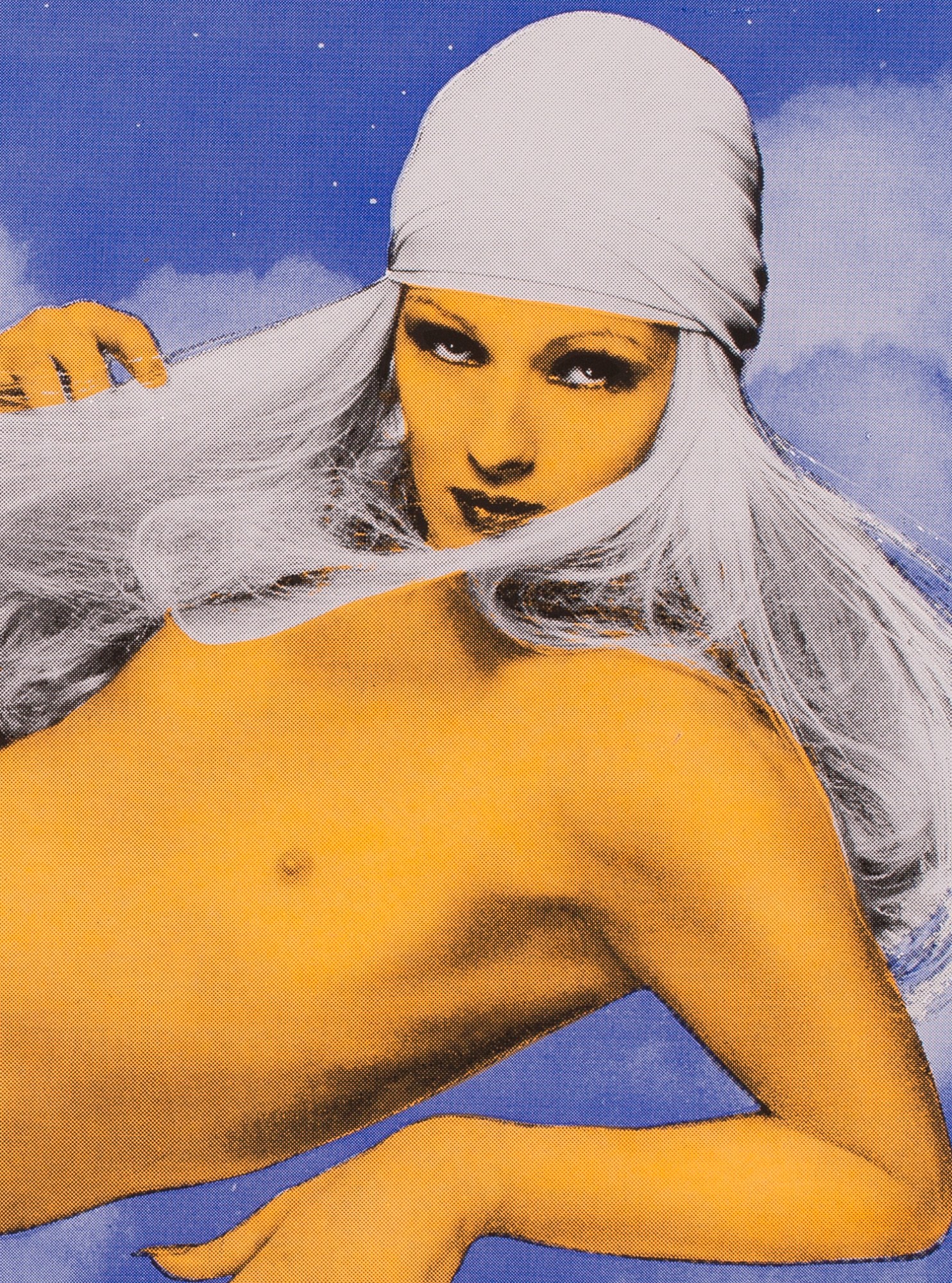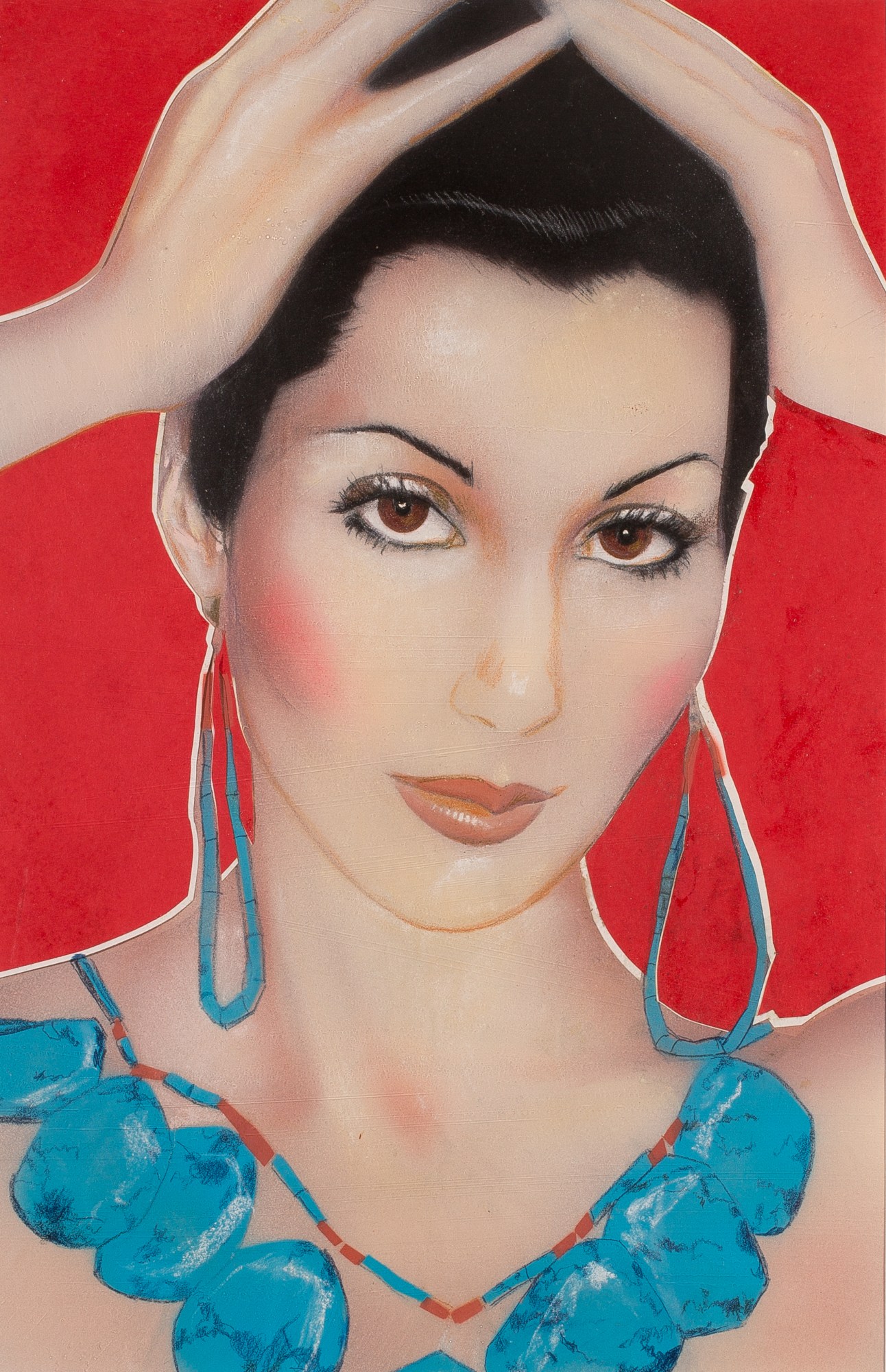Roger and Mauricio Padilha’s lovingly researched books have achieved something of a legendary status in the fashion world. Their epic tome on Stephen Sprouse rehabilitated the reputation of late designer as one of the greats, after he’d become best known for his neon graffiti for Louis Vuitton. Their book on illustrator Antonio Lopez unleashed a wave of 70s inspiration throughout the industry, while their 2015 monograph on photographer Chris von Wangenheim shone a spotlight on an overlooked talent. There’s a theme here — the brothers are intent on chronicling the oft neglected talents of New York’s pre-internet age, restoring them to the glory they deserve.
Their latest work is on the artist Richard Bernstein, best known for his painted covers of Interview magazine in the 70s and 80s. In the course of their research, however, the brothers found that there was so much more to Bernstein, who lived in the Chelsea Hotel for over four decades, worked with Peggy Guggenheim, and was more of a contemporary of Warhol’s than a protegé. Here, they tell i-D about Richard Bernstein: Starmaker—Andy Warhol’s Cover Artist (out September 4) — discovering his lost archive, how Union Square was once the creative heart of the city, and the joys of publishing books.
How did you get into the business of publishing? From the start, your books have been both intensely researched and incredible to look at.
Mauricio: You know what, we work with young fashion designers, and we’ll have been doing PR for 21 years in September. And working all these years, we’d talk to young designers and say, “Oh that’s so Rudi Gernreich,” or whoever. And they’d look at us and go, “Who’s Verushka, we don’t know what you’re talking about, who’s Verushka?” So then Roger and I started a magazine, called Mao mag, that we would do twice a year during fashion week. And we would interview everyone we ever loved – Jane Forth, Donna Jordan, we did features on Antonio Lopez and Stephen Sprouse. Then we started to run out of money, because, you know. There’s only so much you can do! We were in Corso Como and Colette, but made not a dime off it. It was a labor of love. So then, when we stopped it, Stephen Sprouse’s mother called. She said, “You should do a book on Stephen. He always wanted a book done on him, and I would love you to do it because I loved the feature on him in your magazine.”
We were like, we don’t know how to do a book. She says, “Well it’s just more paper and it’s got a hardcover.” So I called Rizzoli, we got a meeting, and the rest is…
Roger: Books are so complicated and take two years of your life. We could just tell young designers to google Donna Jordan. But you know, we work in PR, and it’s so fleeting. We get our clients to dress Nicki Minaj, people are excited for about three hours. Magazines, maybe 30 days. But books are around forever. Yesterday we went to a screening of a documentary, and a kid walked up to us and said “Your Antonio book changed my life, I look at it every day.” That’s really cool. It’s the one thing we do that will live forever.
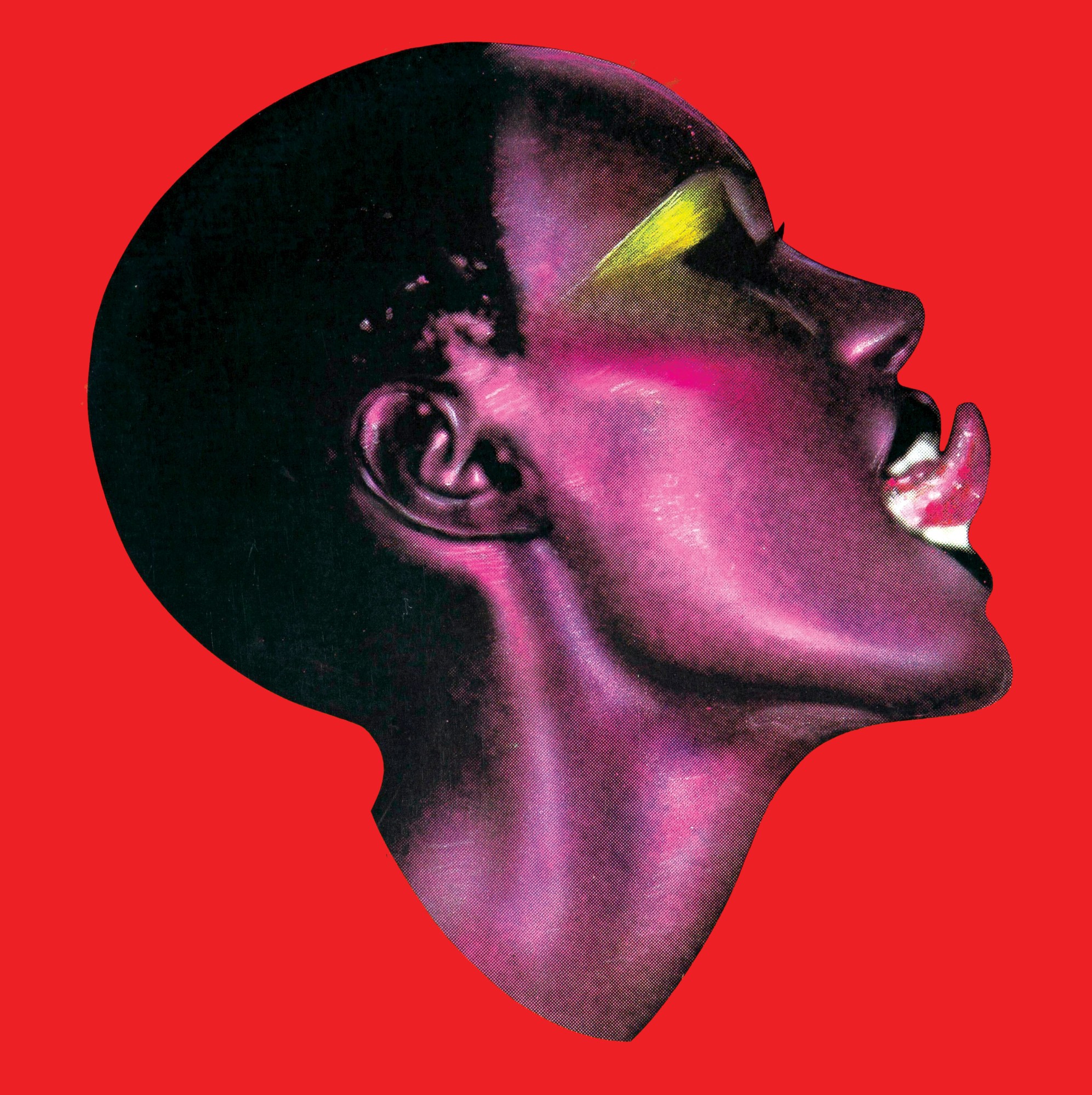
What’s it like delving into someone’s archives to the extent that you do?
Both: It’s the best part of doing the book.
R: We love seeing an image that’s iconic — seeing the contact sheet, or seeing the sketches that lead up to the art piece we love. Archives for us…
M: When we did the Antonio book we were in a warehouse in New Jersey, all summer long, and it was like 90 degrees out. We were sweating to death, but we’d open a box and it would contain 10 Polaroids of Grace Jones that nobody had ever seen. It was just incredible.
You’re delving into the world pre-internet.
M: Sometimes there are things in the archives that are more relevant to the world now, rather than when they were taken, but they were never seen. So we bring that out in our books as well.
How do you choose your subjects?
R: Basically, Mauricio and I had a very limited vocabulary of people who influenced us. We’re brothers, and we’re very close in age… we love New York artists from the 60s, 70s, and 80s. That’s our go-to point of reference. So that’s what our genre’s been. Certainly, we love European fashion, but what turns our crank is New York. And we just kind of know. The Richard Bernstein presented itself, but we’d been talking about doing it for years. And we got a call out of the blue, from this man Rory, saying, “I love your books, my uncle was Richard Bernstein, and I have his archives — would you be willing to do a book?” And we have a list of 10-12 people, and he’s number four or five. We’d stayed away because we thought he’d be too niche, but when we saw the archives, and saw that Interview covers were the tip of the Iceberg… Interview magazine is only two chapters in our book. There’s so much work. You’re going to be blown away.
M: All our books are on underdogs. When did we Sprouse, everyone was talking about the fact that he was the guy that did the graffiti on the Louis Vuitton bags. When we did Antonio Lopez, nobody was talking about him at that time. Chris von Wangenheim, nobody was talking about. It was just people that really influenced us.
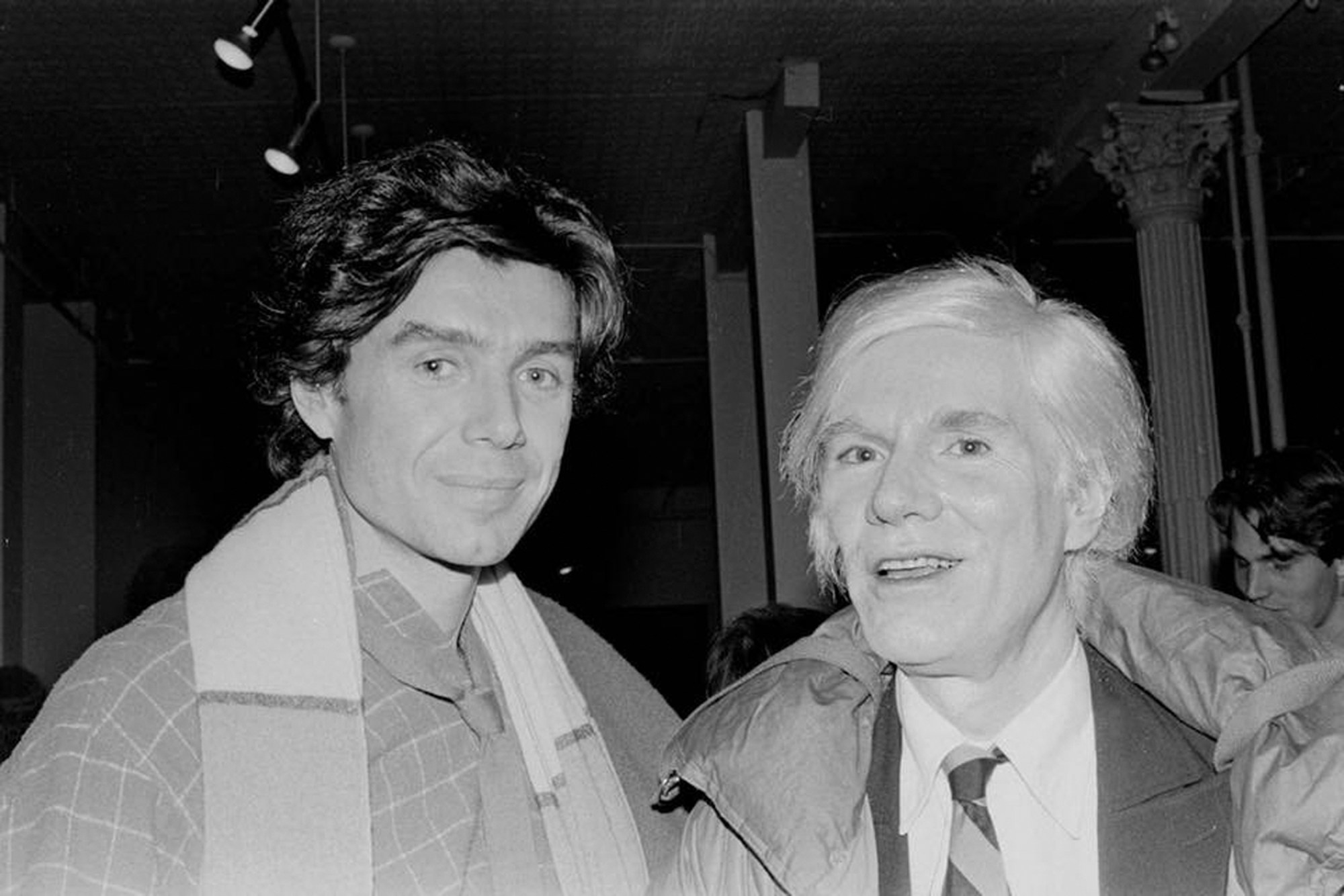
And then they reenter the creative dialogue. I’ve seen so much of those artists since.
R: Our favorite was after the Antonio book, there were pictures that really hadn’t been seen before it was published, and maybe two or three months after, Steven Meisel did an Italian Vogue where he did Jerry Hall and Antonio-esque models.
M: There were 12 pages in the magazine that looked exactly like the Antonio pictures.
R: And we loved when Love magazine did Kate Moss in the bathtub.
M: It’s like we throw it in the air and all these things happen. For us it’s really fun to see that.
You create something of a Bible for the artist’s work.
R: Well, we work with family archives, so not only do they keep the work, but they have the driver’s license, and passports, and hats. Richard Bernstein has all these magazines and artworks he’d collected from other people. You even get to see what these people’s references were. Everything comes from somewhere.
M: Another thing we’d find in the Bernstein archive when we opened up the boxes, there’d be prints by Bill King, and Scavullo, Jean-Paul Goude — all prints Bernstein used to make his paintings. The Lisa Bonet one, that’s famous — she’s wearing a big white hat in the original that we didn’t even know about.
Who does what on the books?
M: We divide it up. I’ll contact everyone to get the interviews with them, Roger does the interviews and writes the book. Then, while he’s writing the book, I’m here until two in the morning looking at images, scanning, retouching. So that they’re perfect. Then we edit everything together based on how he wrote it, and how it flows.
R: And we get very involved with the art direction of it, which is rare.
M: The art directors need us [laughs].
R: We know what it’s going to look like before we do them.

Is it easier to convince people to work with you now you’ve published quite a few tomes?
R: Yes and no. Beyond wanting to establish a legacy for an artist, these people are also dealing with loss — family loss. I don’t know about you, but my family, apart from my brother, don’t know everything about me. So when you start uncovering things, it’s like they’re meeting another side of someone that they were close to.
M: Ultimately they know that once the book comes out, the artwork is going to be more valuable. Some people have work in their basement for 25 years and they don’t know what to do with it.
Aside from the incredible archive images, do you think people will be surprised by the Bernstein book?
R: The fact that Interview was a tiny part of his career, and that he had such a breadth of work.
M: The book really starts in 1964, he’s in Europe, he’s in Venice, working with Peggy Guggenheim and Paloma Picasso. That whole part was really exciting for us. He meets Bill King in Europe, and starts work on Queen magazine, which I don’t think is there anymore. When he gets to New York, he’s doing all these different albums, for Grace Jones and other artists. And then Warhol sees his work. So there’s this whole body of work before Warhol.
R: People think he was a Warhol protege, but they were very close in age. I think Warhol was only seven years older. But Richard wasn’t part of the young people Warhol hung out with, he was more of a peer. He was doing these amazing things, almost like abstract pop art. They’re really incredible. So there’s so many parallels between Warhol and Richard, and the sad thing is that he had the talent to do what Warhol did, but other things kind of held him back.
So he’s been neglected by history, along with a lot of your subjects.
R: They all had offices in Union Square somehow. Richard Bernstein didn’t, but he was working at Interview, which had offices there. Antonio had a studio…
M: Right across from the factory, and so did Chris von Wangenheim.
R: Stephen Sprouse moved into Warhol’s old factory. We always think if we could take a time machine back to 1972, and just sit in the park, we would watch our books’ subjects just walk by.
